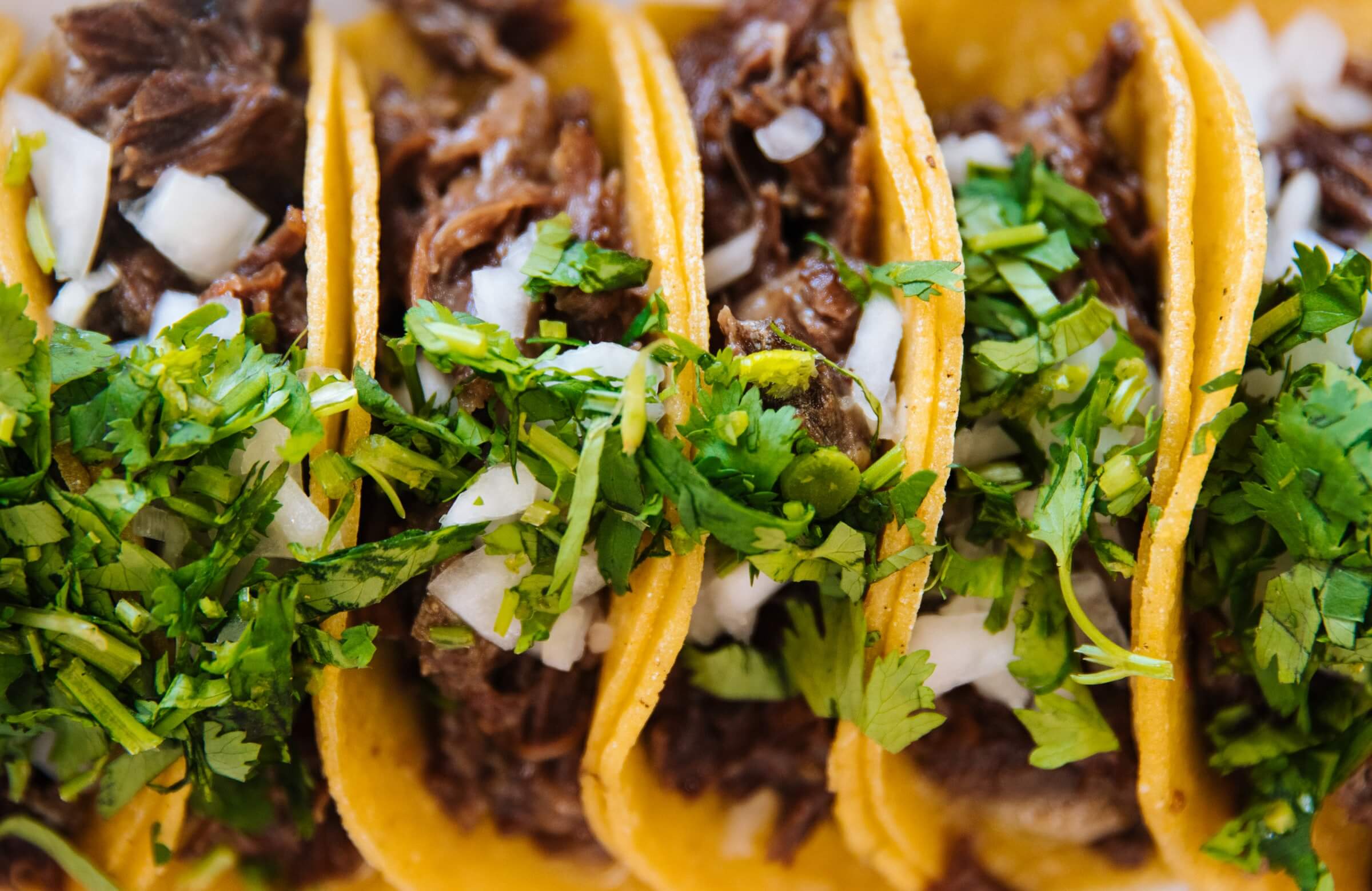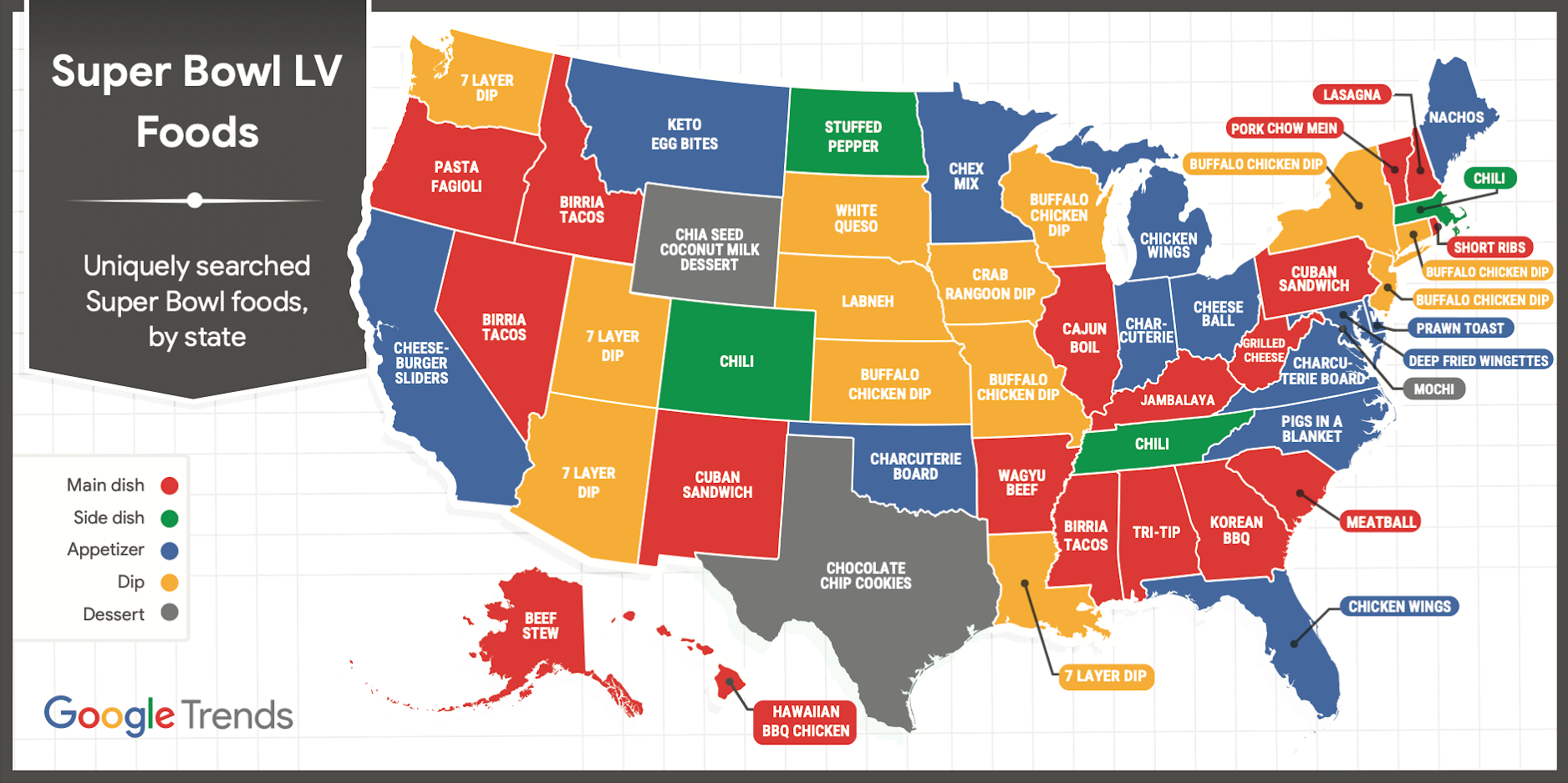Finalizing Your Big Game Menu? Google is Here to Help
by David Klemt
Operators putting the final touches on their delivery, takeout, meal kit and Big Game menus for February 7 could probably use some help.
None of us have a crystal ball but we do all have access to Google Trends intel, which is often just as good.
Google’s latest data-driven infographic is just in time for this coming weekend: Uniquely searched Super Bowl foods, by state.”
The information, neatly categorized by food item type, provides insight into what people in each state are interested in ordering from restaurants or featuring at their at-home gathering. Such data can help operators dial in their menus and create Big Game packages, offering customers a convenient way to enjoy their favorite foods while they watch the Big Game.
Unique Super Bowl Food Searches
Google color-coded their infographic. Red represents main dishes, green is for side dishes, appetizers are blue, dip is yellow, and grey denotes dessert. As the Google map shows, several states are more into snacks than entrees.
Eighteen states are red. Interestingly, a specific item is the top search in three states. Nevada, Idaho and Mississippi are dominated by birria tacos. Cuban sandwich was the top search in two states: New Mexico and Pennsylvania. The other 13 states each have top searches unique to them:
- Oregon: Pasta fagioli
- Alaska: Beef stew
- Hawaii: Hawaiian BBQ chicken
- Illinois: Cajun boil
- Arkansas: Wagyu beef
- Kentucky: Jambalaya
- Alabama: Tri-tip
- Georgia: Korean BBQ
- South Carolina: Meatball
- West Virginia: Grilled cheese
- Rhode Island: Short ribs
- Vermont: Pork chow mein
- New Hampshire: Lasagna
Just four states are green, and chili is the top search in 75 percent of those: Colorado, Tennessee and Massachusetts. North Dakota is the outlier with stuffed peppers.
There are 13 states colored blue. The top football food search in three of those—Oklahoma, Virginia and Indiana—is charcuterie board. Surprisingly, chicken wings are the top search in just two states, and neither is their state of origin: Michigan and Florida. The most unique appetizer, at least in our view, is Montana’s interest in keto egg bites. Although, Maryland’s search for deep fried wingettes is very specific and Delaware’s search for prawn toast is rather distinct. What’s commonly assumed to be a sports bar and Super Bowl staple, nachos, was only the top search in one state: Maine. California searched for cheeseburger sliders, Minnesota looked up Chex Mix, Ohio is most interested in cheese ball, and North Carolina is all about pigs in a blanket.
Another 13 states are most interested, per Google data, in dip (yellow states). In particular, Buffalo chicken dip reigns supreme. It’s the top search in six states: Kansas, Missouri, Wisconsin, New Jersey, Connecticut and, somewhat predictably, New York. However, 7-layer dip is a close second, dominating four states: Washington, Arizona, Utah and Louisiana. Nebraska may lay claim to Most Unique Dip Search with labneh. South Dakota looked up white queso the most, and Iowa prefers crab rangoon dip.
Only two states and Washington, DC, searched for dessert items the most. Wyoming’s top search was incredibly specific: chia seed coconut milk dessert. Texas wants chocolate chip cookies, and our nation’s capital searched for mochi.
Unfortunately, this Google Trends data doesn’t include Puerto Rico. You can view the infographic by scrolling down.
Takeaways
Top main dish: Birria tacos
Top side dish: Chili
Top appetizer: Charcuterie board
Top dip: Buffalo chicken
Map image: Google
Featured image: Jeswin Thomas on Unsplash











